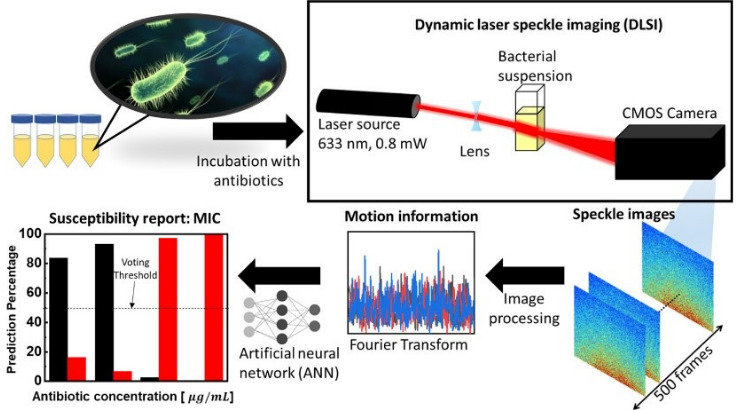Rapid Antimicrobial Susceptibility Testing using Machine Learning
ID# 2020-5043
Technology Summary
Roughly 50% of antibiotic treatments are started with the wrong antibiotics. Rapid antimicrobial susceptibility testing (AST) is urgently needed to assist caregivers in the timely administration of the correct treatments. A lack of reliable and accurate rapid AST contributes to the spread of antimicrobial-resistant infections, which the WHO considers to be the largest global health threat of the 21st century, as misuse and overuse of broad-spectrum antibiotics result from gold-standard AST methods taking too long (>16 h). A team of Penn State inventors have developed a dynamic laser speckle imaging technique to rapidly quantify the response of bacteria to antibiotics. Time-resolved imaging results are analyzed using a machine learning algorithm – trained and validated using the gold-standard AST method – to predict the minimum inhibitory concentration (MIC) of antibiotics.
Application & Market Utility
Current tests serve some hospitalized patients rather well; however, there is a significant unmet need for rapid and decentralized AST for acute infections in outpatient clinics. In all settings, rapid point-of-care testing is particularly important in patients with serious bacterial infections or those with immunodeficiencies. Our rapid AST technology is low-cost, label-free, and simple to use. It has been shown to predict MIC of antibiotics with high accuracy comparable to broth microdilution (gold-standard), but in much less time (1-4 h, depending on the antimicrobial).
Next Steps
Seeking research collaboration and licensing opportunities.

